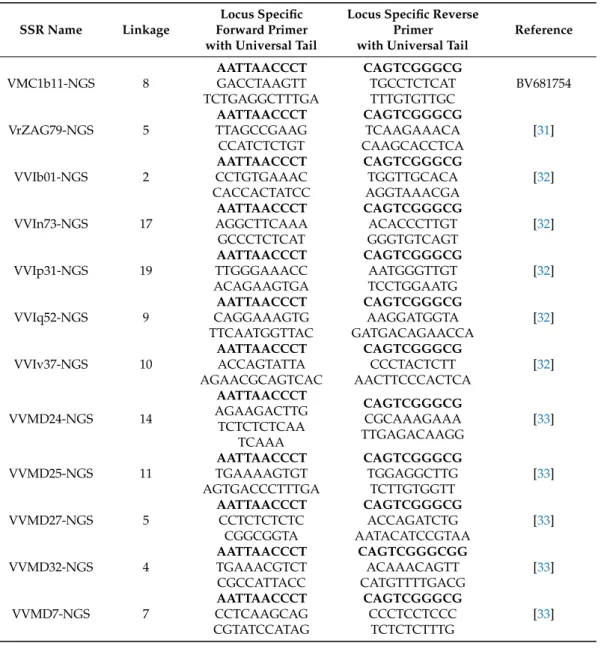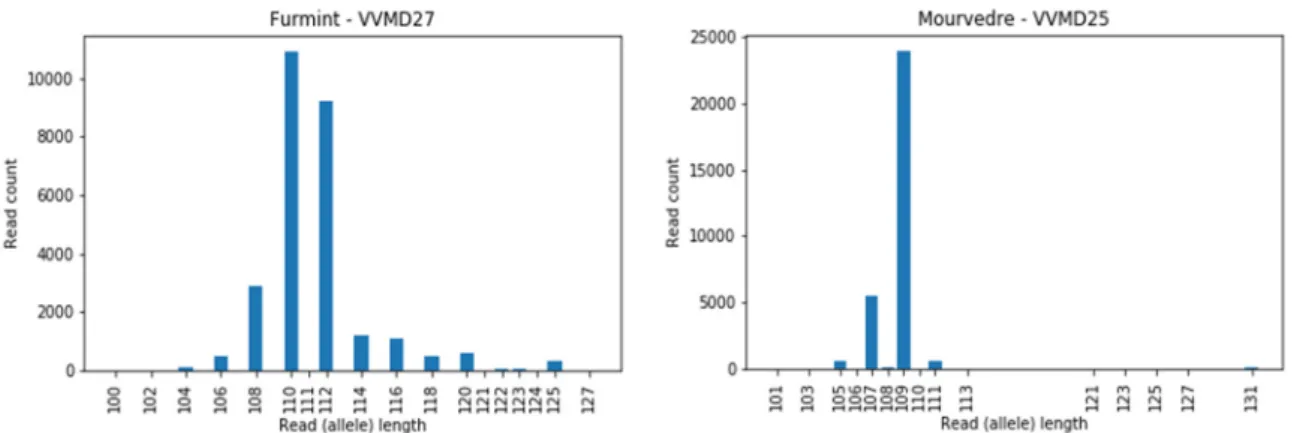The Potential of HTS Approaches for Accurate Genotyping in Grapevine (Vitis vinifera L.)
Texte intégral
Figure




Documents relatifs
Quelques conséquences relatives aux systèmes de conduite de la vigne sont discutées pour les orientations Nord-Sud qui sont les plus efficaces en captation de
Regarding partitioning of leaf CO 2 assimilation, products stayed mainly in leaves and then in stem, roots and inflorescences with low fluctuations during flower development. On
Mixed infections with genetically distant variants and recombinants are frequent in vineyards, preventing a precise association between genetic variability and symptom
In parallel, skins and seeds tannin compositions of five different Mediterranean grapes varieties (Syrah, Grenache, Mourvedre, Carignan, Counoise) were assessed for the 2009
M@ppemonde, revue trimestrielle sur l'image géographique et les formes du territoire http://mappemonde.mgm.fr/123geov4/ | 5 L’accueil de cette application auprès du maire et de
L’entrée choisie par les « seuils » montre que la plupart des projets de KDTM sont situés à moins de 20 km du centre de Hanoi, mais dans des districts ruraux, et qu’ils ont
Multiple origins of cultivated grapevine (Vitis vinifera L. ssp sativa) based on chloroplast DNA polymorphims. Emanuelli F, Battilana J, Costantini L, Le Cunff L, This P, Grando MS.
The transgression of the next incursion in the Kalatar and Wulagen formations is now constrained as early Lutetian (ca. 47–46 Ma), whereas its regression in the Bashibulake
![Table 4. Sequencing statistics for 96 grapevine cultivars over 12 loci. Locus Reference Allele Length MappedReads1 Amount of Data [bp] after Mapping 2 Average Coverage afterMapping No](https://thumb-eu.123doks.com/thumbv2/123doknet/13854328.445008/9.892.123.770.158.385/sequencing-statistics-grapevine-cultivars-reference-mappedreads-coverage-aftermapping.webp)


